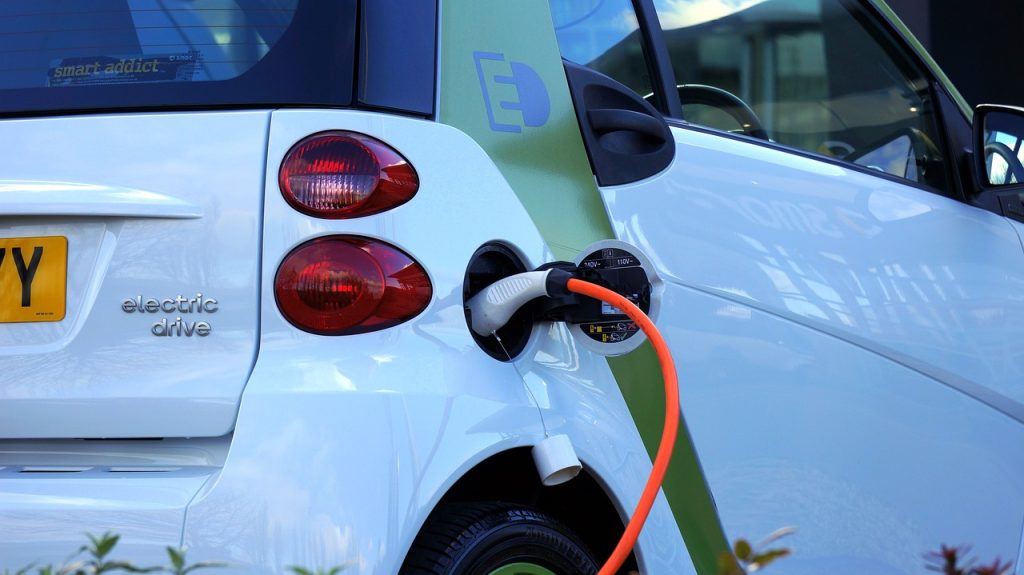- Classify the battery as ‘end-of-life’ once it’s discharged.
- Transport the battery to a recycling facility.
- Neutralize the battery by discharging and disassembling it.
- Separate valuable metals like lithium, cobalt, nickel, and copper.
- Repurpose the recovered materials for new batteries or other uses.
Understanding EV Battery Recycling and Life: The Science behind EV Batteries
EV batteries or electric vehicle batteries are becoming the new norm as we transition towards more sustainable forms of energy. But, have you ever wondered what happens to an EV battery when it’s reached the end of its life? Turns out, they don’t just get tossed aside – the exciting part is, you can actually recycle them! Yes, recycling EV batteries is not just possible; it’s becoming a part of the circular economy, just like any other recyclable material.
You’d probably be thinking, how does EV battery recycling work? Well, it’s a pretty amazing science behind it. An EV battery holds a significant amount of energy, and when it’s no longer suitable for use, it doesn’t mean all the components are not useful. There are important materials like lithium, cobalt, nickel, and copper, amongst others, which can be successfully repurposed through battery recycling.
Now, onto the fascinating part of the process: how do you recycle an EV battery? After a battery has been discharged, it’s classified as ‘end-of-life.’ The battery is then neutralized at a recycling facility, where it’s discharged and disassembled. All those precious metals mentioned earlier? They’re meticulously separated and go on to live another life. They could be used in new batteries, for example.
The importance of recycling EV batteries is twofold: not only does it prevent harmful substances from leaking into our environment, but it also conserves resources. Sounds good, doesn’t it? We’re basically recycling energy for future use.
But what is the life span of an EV battery, you may wonder. Well, it can vary, and a lot of it depends on how the battery has been used and cared for. On average, an EV battery can last anywhere between 10 to 20 years! However, their efficiency starts to dwindle past the 10-year mark. When they come to the end of their lifespan, they’re not immediately rendered useless- they can often be used in energy storage systems, before finally being sent for recycling.
Isn’t it amazing? Recyclers are essentially keeping energy and precious materials from going to waste. The science behind EV batteries, their life, and the process of recycling them is fascinating and incredibly resourceful. And as we progress and innovate, it’s likely that the process of battery recycling will become even more efficient and beneficial to our planet.
So next time you think about the energy used to power your EV, consider all the amazing science and recycling capabilities behind your battery. And let’s take a moment to appreciate the role recycling plays in promoting a sustainable future. After all, every time a battery is recycled, that’s one less battery sitting in a landfill and one more step forward in our sustainable practices.
Recycling and Materials used in Electric Vehicles: a Popular Car Battery Solution
Electric car batteries, a crucial component of electric vehicles (EVs), are becoming increasingly common as more and more people embrace sustainable transport methods. The use of electric cars is not just driven by the desire to reduce carbon emissions, but also by the efficiency and performance they offer. That being said, one question looming in the public mind is what happens when these electric car batteries reach the end of their useful life. Can they be tossed onto the landfill like regular batteries? Absolutely not! This brings us to the importance of recycling batteries, particularly lithium batteries which power most electric vehicles.
Thankfully, numerous innovative solutions have started to emerge around electric vehicle battery recycling. It’s not just about environmental responsibility, recycling batteries also has value in reclaiming the metals and materials enclosed within. Lithium, for instance, is a highly valuable metal that’s used in an array of tech products apart from electric vehicles. There’s also a host of other metals involved in EV battery production, including cobalt, nickel, and manganese. These materials are highly valuable and their demand is skyrocketing, hence why recycling batteries makes sense both financially and environmentally.
Of course, not all electric car batteries are the same. Some electric vehicles use lithium-ion batteries, while others prefer nickel-metal hydride batteries. Regardless, in the context of battery recycling, we need to assess what type of metals and materials can be reclaimed and how these can be utilised in the production of new electric vehicle batteries. In fact, several electric vehicle manufacturers have already confirmed that they are using recycled materials in new electric car batteries which is a huge leap towards closing the loop in the EV battery life cycle.
Recycling and repurposing old electric vehicle batteries doesn’t just reduce the need for raw materials, but also decreases the overall environmental impact of manufacturing new batteries. Reducing the amount of waste is paramount in contributing to a more sustainable future not just for electric vehicles, but for the planet as a whole. However, it’s worth noting that the recycling process itself needs to be effective and efficient to make it beneficial overall. Recycling batteries is no easy task and it needs rigorous processes in place to ensure that the valuable elements are recovered efficiently and safely.
As the market for electric vehicles continues to grow, so does the need for a viable and sustainable solution for dealing with used EV batteries. As such, recycling the valuable metals is not only critical for environmental reasons, but it could also be a potential business opportunity. So, the next time you’re talking about electric vehicles or contemplating buying an EV, remember that the electric car batteries, specifically the lithium batteries, aren’t just powerful – they are also recyclable. With increasing focus on materials used in electric car fabrication, expect more developments in the recycling and repurposing of old batteries down the road.
How Recyclable Are EV Batteries? : Assessing the Potential of Battery Recycling
So, how recyclable are EV batteries? See, EV battery’s potential for recycling is actually quite high, especially for li-ion batteries, which form an integral part of EV battery technology. Car ratings often overlook the battery pack’s recyclability, but it’s just as important as the vehicle’s power. In fact, the ability to recycle EV batteries can significantly offset the costs of purchasing new batteries, making EVs more affordable for the small, everyday consumer.
Li-ion batteries possess a high energy density, lending a lot of power to the EVs. However, these batteries, just like any other battery, degrade over time. Unlike a conventional toothbrush or small electronic device battery, though, a worn-out EV battery still holds a substantial amount of power. Thus, instead of discarding it, repurposing or recycling the battery is a much more viable and eco-friendly solution.
The process of battery recycling involves breaking down the EV battery into tiny pieces in a hammer mill, which are then placed in a vat, where useful materials are separated out. The future lies in improving this process to make it more efficient and cost-effective. Critics argue that battery recycling is energy-intensive, but the upside is the reduction in costs and the environmental impact of mining fresh materials. It’s like creating a closed-loop system, where used EV batteries are given a new life.
If we review some top models from Ford equipped with EV battery, their batteries are notable for their robustness and longevity. However, even they’ve got to be replaced at some point. Having an efficient battery recycling system in place, for instance, could prevent these used batteries from ending up in the landfill while also recovering valuable components from them. Such a recycling program could be a game-changer for the future of EV batteries.
When it comes to costs, recycling batteries is much cheaper than extracting raw materials. Plus, with the demand for EVs expected to rise, recycle programs for EV batteries can help meet the increasing demand for raw materials. Efforts are being made toward the development of advanced recycling processes that can recover more valuable metals from the battery, thereby driving the costs down even further.
In conclusion, you can recycle your used EV batteries instead of discarding them, which isn’t just beneficial for the environment but it’s also cost-effective. From overarching policy implementation to advancing battery technology, several factors govern the ability to recycle EV batteries. But, steps are indeed being taken in the right direction. Amidst this burgeoning EV whirlpool, the potential of battery recycling shouldn’t be overlooked. That’s why we aim to provide you with extensive reviews, from car ratings to everything about EVs and battery recycling here and beyond. The effort to promote sustainable power solutions, like battery recycling, has already begun, and it’s only going to gain more momentum down the road.
Tapping into the Lifespan of an Ion-Based Battery
Anyone delving into the life science behind ion-based EV batteries and battery life will learn that EV batteries aren’t as straightforward as one might believe. A central element of the science of these impressive packs is the knowledge of “ion,” a term you’ll frequently encounter in this business, due to its significance in this energy industry. However, to gain better insight, let’s explore the life and workings of an ion-driven EV battery.
A common misconception many hold about EV batteries is that they’re quick to die — but that couldn’t be further from the truth. In fact, the lifespan of these ion batteries can be extraordinarily long. Like every other type of battery, the life of an EV battery revolves around the cycles of charging and discharging. However, it’s not only the charge cycles that affect the lifespan: the life of EV batteries also heavily relies on factors such as usage, temperature, and charging method.
The anatomy of an electric vehicle’s battery cell contains a small apparatus that plays a significant role. The battery’s cells, specifically the lithium-ion cells, are the tiny powerhouses that give EVs their impressive performance. These cells are rechargeable and all work together to make the vehicle run smoothly. A typical EV battery pack consists of numerous cells working in harmony.
Yet, what happens when these cells run their course? That’s where EV batteries recycling comes in. Businesses are increasing efforts for robust programs in recycling these packs. Though ion-based fiber batteries might seem like a nightmare to recycle—considering their intricate mechanisms—developing technology is addressing this issue. Many are more recyclable than you might think; this depends on the methods employed and materials used. Thank goodness for science!
This process is not as costly as assumed. Businesses are pushing to make the recycling process more cost-effective, reducing costs for both the company and the consumer. It’s not just about staying ahead in a competitive business—it’s about contributing to a sustainable energy solution and reducing waste. In fact some states are taking steps to ensure recycling of EV batteries is mandatory. Not only does this help in saving materials, but it is seen as the responsible way forward.
No, these batteries aren’t perfect, and yes, they’ve got their share of issues. However, they represent the way forward for cleaner, more efficient transportation. Though the road may be bumpy, every dead EV battery has the potential to be recycled and given a new life. Pioneers in this field are looking at various opportunities to extend the usefulness of batteries, going beyond just recycling. Certain methods allow the batteries to be refurbished or recharged, proving useful in other sectors.
In conclusion, we can decipher that the life of EV batteries is rich in opportunities. As this industry grows, so will efforts in reusing and recycling. While it’s a business, it’s also a major stride towards a green future, one that empowers companies and customers with accessible, clean, renewable energy. So remember, when it comes to EV batteries, dead doesn’t necessarily mean it’s the end—it could just be a new start.
Paving the Road to Recycling: Sustainable Ways to Handle Used Car Batteries
The auto industry, for the longest time, has been known for unrecycled materials. Today, significant steps are being taken in auto recycling, particularly car batteries. Electric vehicles (EVs) are earning impressive car ratings, primarily because of their less devastating impact on the environment. But what happens when EV batteries reach out to the end of their life? The answer lies in finding sustainable ways to handle used car batteries.
The life span of EV batteries can range from small to relatively larger ones. But either way, they ought to be revisited once they’ve finished serving their function. The primary method of reviving them into the auto life cycle is through recycling. The concept of EV recycling revolves around the meticulous extraction of metals from spent battery packs. These metals include valuable elements like lithium which is pivotal in creating new batteries. It’s a process that, when managed professionally, could lead to a billion-dollar recycling business.
Toyota, a leading name in the EV industry, has already commenced working on technologies to proficiently recycle used batteries. But the process isn’t as simple as one might think. Firstly, the EV batteries should be cautiously dismantled by removing their outer casing or frame. This is to access the smaller batteries or packs inside, each possessing a significant amount of power. They are rigorously checked for functionality before moving into the recycling process.
Electrochemistry and metals underneath the battery casing are given thorough attention. The battery packs are cautiously handled to extract lithium along with other key materials such as cobalt. Metals are melted down and purified using heat and chemical processes. They are then fabricated into new objects, making recycling a fruitful process, transforming used objects back into useful materials.
It’s a resourceful practice, giving used batteries a new life. However, the challenge lies in setting up a system that can effectively recycle these batteries. But the energy industry, in news recently, is heavily investing in finding solutions to this growing need. Chevrolet, another big name, is also pioneering in developing efficient battery recycling techniques.
The future of EVs relies heavily on how effectively their batteries are recycled. It’s not just about reducing waste but also about conserving our resources. After all, lithium is a sensitive element and cannot be harvested indefinitely. Ideally, all EV batteries should be recycled. While EVs operate on energy, it’s high time that their owners also join hands in conserving the same energy long after the car battery has served its purpose.
Committed research and development in this realm can intensify the road to recycling and give auto recycling a whole new meaning. It’s a significant leap for the global EV market, placing recycling at the heart of not just business, but of preservation and sustainability. The quest to uncover efficient, safe, and affordable techniques to recycle car batteries is still underway, but with the growing demand for EVs, powerful solutions will indeed emerge. Let’s read more about such exciting developments in the next auto news!




